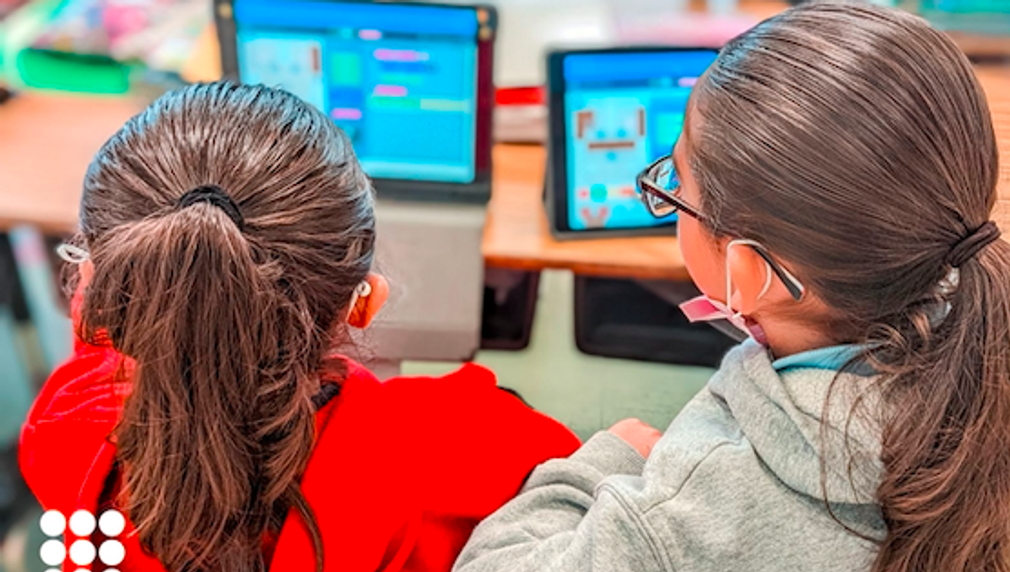Get Coding: Preparing LA’s Students to Thrive in Our Tech-Obsessed World
Research estimates that only 7.3% of elementary students have access to a foundational Computer Science (CS) course; opportunities are even rarer for students in low-income communities. 9 Dots offers a powerful solution. Currently bringing in-class CS curriculum to over 8,000 K-6 students and 300 teachers at Title I elementary schools throughout LA, 9 Dots teaches kids the CS skills needed to thrive in our technological world.

What is the primary issue area that your application will impact?
K-12 STEAM Education
In which areas of Los Angeles will you be directly working?
Central LA
East LA
South LA
West LA
County of Los Angeles
City of Los Angeles
LAUSD (select only if you have a district-wide partnership or project)
Other:: CUSD (Compton Unified School District)
In what stage of innovation is this project, program, or initiative?
Expand existing project, program, or initiative
What is your understanding of the issue that you are seeking to address?
CS occupations are growing faster than average across the labor market (BLS, 2020). Yet women and people of color remain widely underrepresented across CS fields. As of 2020, only 18% of software developers are female, and only 6% are Black or Latinx (BLS, 2020). A key driver of these disparities is a lack of access to early, consistent, high-quality CS education in public schools. In 2016, the federal Computer Science for All initiative recognized CS as a “new basic” skill set “necessary for economic opportunity and social mobility.” Yet the 2021 State of Computer Science report estimated that only 7.3% of elementary school students have access to CS courses and that Black, Latinx, and female students remain widely underrepresented. CS education opportunities are typically geared toward high school students, but reaching children early in their education has powerful implications for marginalized students’ building their identity as problem solvers who belong in the STEM world.
Describe the project, program, or initiative this grant will support to address the issue.
9 Dots’ original K-6 Get Coding curriculum challenges student stereotypes about who can and should engage in CS. Through Get Coding, youth build self-confidence in their unique capabilities and identities as coders and problem solvers. Students develop proficiency in CS concepts and practices across grade bands through Get Coding, starting with unplugged activities in Kindergarten and progressing to introductory JavaScript by the 5th grade. Get Coding is structured as a one-hour standalone class, taught once a week during the standard school day for thirty weeks (the academic year). Aligned with Next Generation Science, Common Core, and the new California state CS standards, each curriculum level consists of three modules of ten lessons. The final module consists of an interactive project such as creating interactive stories and drawing emojis with code. In other words, Get Coding is an engaging and dynamic way to reach underrepresented students who are less likely to elect to participate in an after-school coding class or club. By offering CS classes as part of the standard school week, 9 Dots ensures that all students gain an early foundation in technical, computational thinking, and problem-solving skills, encouraging students to feel empowered to evaluate and drive future innovations. The confidence and competence students gain through Get Coding allow youth to build an identity as people who can and will pursue CS higher education and careers.
Describe how Los Angeles County will be different if your work is successful.
9 Dots is committed to bringing CS education to all students – particularly those from historically under-resourced communities. Get Coding eliminates social and structural barriers to CS education by 1) partnering with Title I elementary schools in low-income communities to reach underserved students earlier; 2) building cohesive and rigorous K-6 CS education pathways with measurable outcomes in proficiency, and 3) providing comprehensive professional development and support for teachers. These efforts work together to bring consistent, sustainable CS education to thousands of students throughout LA County. Our goal is to expand Get Coding to four new Title I partner schools in LA County next year, serving an estimated 10,000 students and 340 teachers. Partnering with four new schools moves us one step closer to bringing CS education to every Title I elementary school in LA County and ensuring that a student’s exposure to CS concepts is not pre-determined by their zip code.
What evidence do you have that this project, program, or initiative is or will be successful, and how will you define and measure success?
Get Coding success is measured against several service-related goals: 1) completing K-6 pathways at our partner schools; 2) graduating 75% of Level 2 teachers to independent coding instructors; 3) 60% of our Get Coding students reaching grade-level proficiency. Progress towards these goals is measured using quantitative and qualitative data. 9 Dots tracks the number of teachers, students, and schools we serve to measure impact. We will have 28 partner schools for SY 2022-23, 14 of them with full K-6 CS pathways and we are on track for 75% of our Level 2 teachers to graduate to independence for SY 2022-23. Student proficiency data is collected through the 9 Dots platform, tracking student progress through each lesson throughout all modules. At the end of each module, Level Up challenges test mastery of previous lesson content and measure proficiency in the coding and problem-solving skills required to complete the challenges successfully. Student proficiency is currently exceeding 60%.
Approximately how many people will be impacted by this project, program, or initiative?
Direct Impact: 10,310
Indirect Impact: 11,300